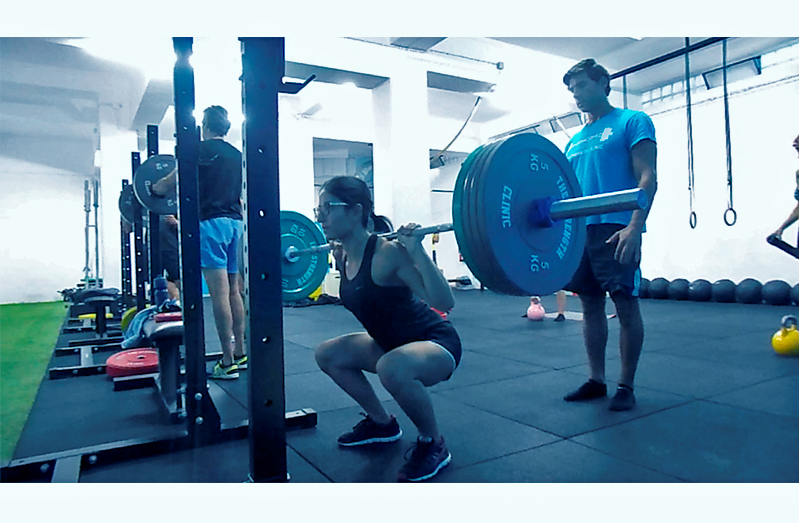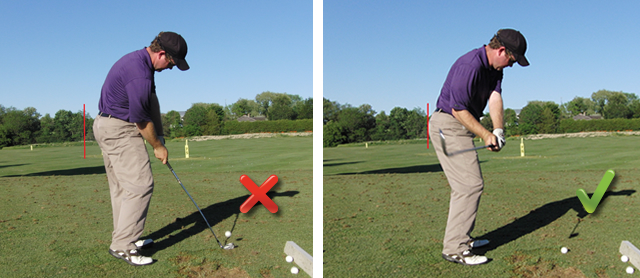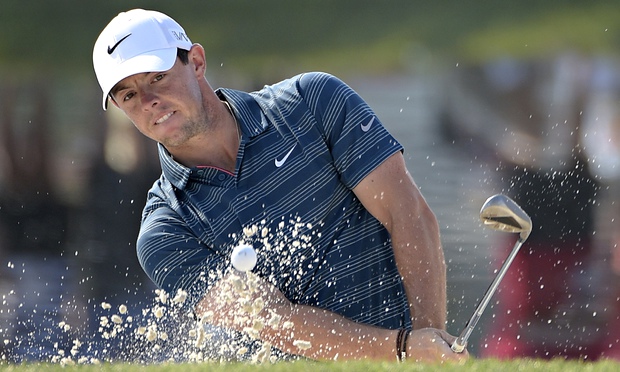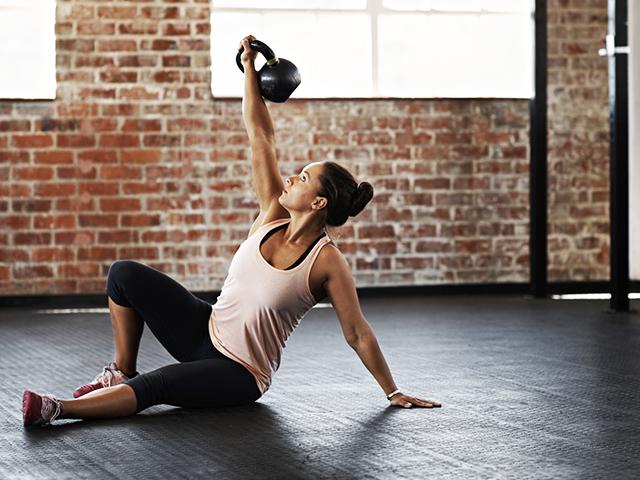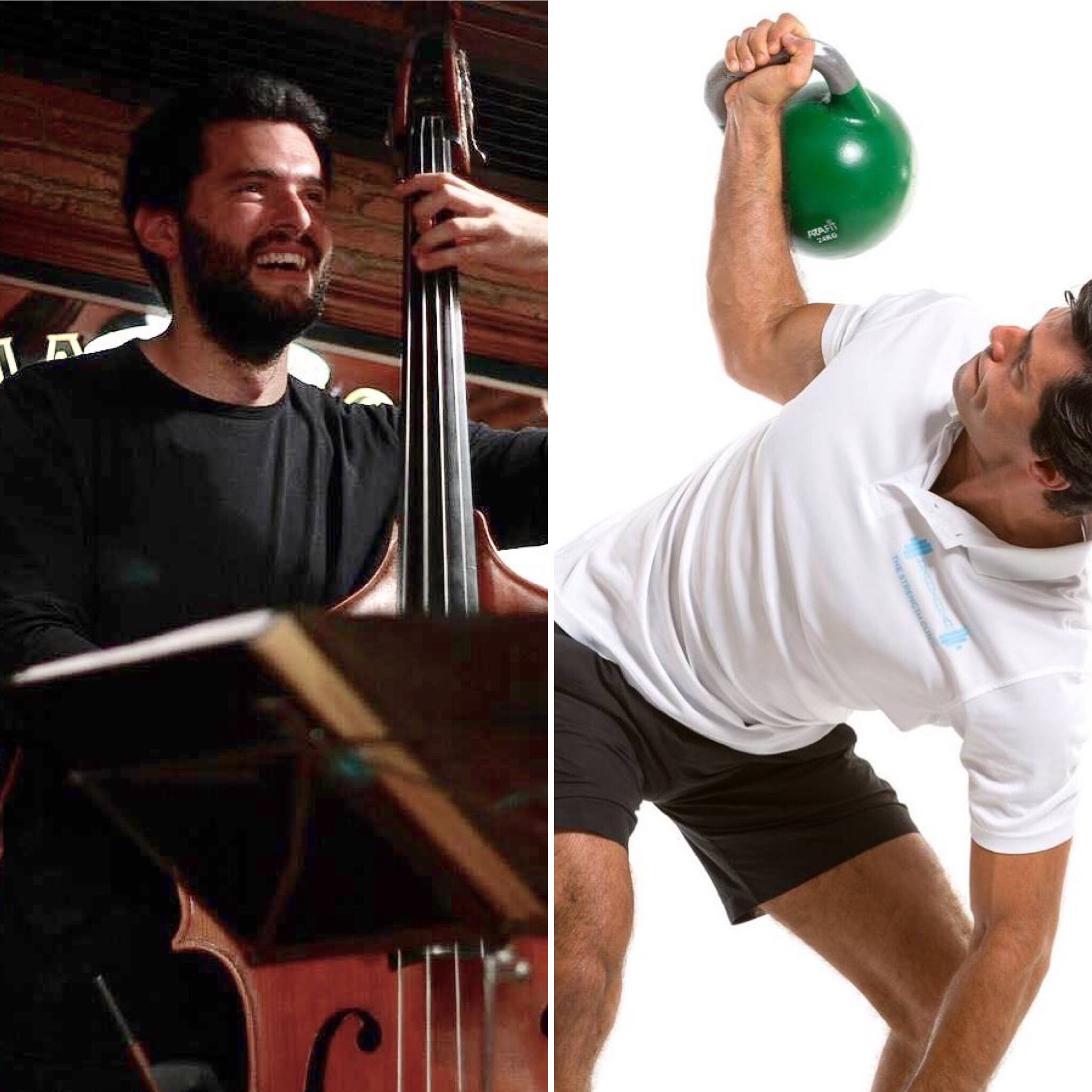We often hear reports from people who spend hours and hours in the gym and remain the same. They do not lose fat, do not gain lean mass, do not gain strength, nor improve their functional capacity. They simply do not evolve. We also have those who rely only on the traditional weight training component to lose weight and yet not always have results, regardless of the diet they follow.
So, what is the secret for having results? Program design and professional supervision may be more important than you think.
In a study conducted by Bea et al. (2010), the authors investigated the association of exercise frequency and volume (total weight lifted on the military press and squat exercises) with changes in body composition in postmenopausal women who participated in a progressive strength training program for six years.
The women were divided into three groups: one group did strength training during this period, one started strength training after one year and the third (control group) did nothing. The training programs were supervised by professionals and involved motivational strategies to increase adherence. The training program consisted of eight exercises (based on free weights and machines) and was done three times a week, progressively.
The results showed that the group that did nothing (control group) gained weight and fat over the six years, suggesting something that everyone should already know: if nothing is done, we will get fatter and weaker with each passing day.
But there is something more interesting to highlight. The authors analyzed the relationship between body fat and increased squat load and found that the women who gained the most strength had better control of their weight and body composition over time! This means that if you are always doing the same program without managing training variables and principles, stagnation is what will happen.
So, what we have to tell you is that if you are part of that package that spends hours in the gym, between exercise machines, selfies and talking to your partner, then you are certainly not on your way to good results. We know that the socialization part is important and should not be ignored, we simply believe that it must be well managed! The key is knowing how to clearly distinguish what is training and what is ‘’going to the gym’’. And more training time is merely a quantitative indicator, not a quality indicator.
Enjoy your training!
Pedro Correia
References:
Bea JW, Cussler EC, Going SB, Blew RM, Metcalfe LL, Lohman TG. Resistance Training Predicts Six-Year Body Composition Change in Postmenopausal Women. Medicine and science in sports and exercise. 2010;42(7):1286-1295. doi:10.1249/MSS.0b013e3181ca8115.
Following up on the topic addressed in the last article, let’s talk today about a common swing characteristic that affects a lot of golfers and that can compromise their swing efficiency and their performance on the golf course: Early Extension.
What is Early Extension?
Early extension can be understood as an integral part of loss of posture, this happens when the player’s hip and spine begin to extend too early in the downswing, i.e. the hips and pelvis move towards the ball in the downswing. In practical terms, if your body is not prepared to perform an efficient golf swing while maintaining good posture throughout the movement, you will end up lifting the upper body (spine) and miss the necessary hip rotation at impact. Your hips play a key role in injury prevention and performance improvement. If you have poor hip mobility, sooner or later your lower back will complain (and you can be sure that this situation will not be very pleasant).
According to studies conducted by the Titleist Performance Institute, 64.3% of amateur golfers early extend
Players who early extend usually refer that they feel trapped during the downswing as if they had to shrug their arms to hit the ball. And it’s normal for that to be so because when you extend your hips too early on the downswing, the space that was supposed to be occupied by your arms and hands was occupied by the lower body. Therefore, the end result will be a blockage of the movement, since your arms and hands can’t get out of the way and will still be needed to hit the ball.
How can I diagnose?
An easy and simple way to check if you do early extension is with your Smart Phone (you probably already have applications that allow you to draw lines and analyze your swing). All you need to do is to ask a friend to film you in the direction of the swing line and capture its full motion from the starting position (setup). After having your swing recorded, compare the position of your pelvis in the initial position with the position of the pelvis in the position of impact, if you notice that it moved towards the direction of the ball is because you extended your hip too early. If this is not possible, you can always ask your golf teacher to help you, I am sure he will be happy to do that.
What are the physical limitations?
“If you’re not assessing, you’re just guessing” – Greg Rose
The physical limitations can be many and to determine the causes that are affecting you, it would be important to make a functional assessment with a professional who understands how your body should move and its relation to the golf swing. According to what I have observed in my practice, I would like to highlight the following:
- Limitations on performing a full squat with the arms extended overhead;
- Limitations in hip mobility (especially in internal rotation of the leading hip and in anterior or posterior pelvic tilt);
- Limitations in the ability to separate / disassociate the thorax from hips (X factor);
- Limitations in the ability to stabilize the pelvis because the glutes and core muscles are inhibited.
What can I do to improve?
Although the causes may vary from person to person, I’m pretty sure that if you do the following exercises, you will improve and increase your body’s functionality to play golf for a longer time. You only need 10 minutes a day.
- Myofascial Release with Roller Stick
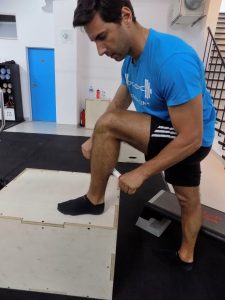
Using a roller stick, look for the trigger points of your calf and massage the inner, central and outer sides of the muscle for 30 seconds in each area. The points that hurt you most are those that need more care. Yes, this exercise might be a little uncomfortable but it’s worth it.
- Glute Bridge with Leg Extension
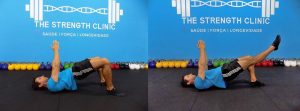
Lying in the supine position, push your heels against the floor, tighten your glutes, and raise your hips to form a glute bridge, with your arms up. Once in this position, extend one leg and form a straight line between the shoulder, hip and heel. Hold this position for 20-30 seconds, always keeping your hips high. Change legs and repeat 5 times on each side.
- Squat with Overhead Arm Reach
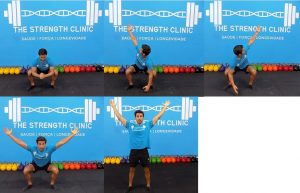
In the squat position (with your heels on the floor and your knees out), raise one arm up, lift the other arm (always looking at your hand) and then raise both arms at the same time and return to the standing position. If you can not squat without raising your heels, you can use a rolled up towel or a board to keep your heels high. Do 2-3 sets and repeat 8-10 times.
- Assisted Squat wiht Medicine Ball
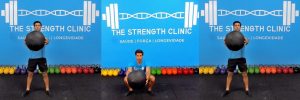
In the standing position, with your feet shoulder-width apart and slightly rotated out, hold a medicine ball (or a bucket full of balls) in front of your body, and begin to slowly lower your body into the squat position by keeping your back straight and without lifting your heels off the floor. Do 2-3 sets and repeat 10-12 times.
I believe that these exercises can be helpful to you, but remember: The swing you can do is directly related to what your body is prepared to do.
See you soon!
Pedro Correia
“We don’t believe there is one way to swing a club; we believe there is an infinite number of ways to swing a club. But we do believe there is one efficient way for all golfers to swing a club and it is based on what they can physically do.”
– Titleist Performance Institute
If you’re reading this, you’re probably interested in improving your physical condition to make more birdies, hit longer drives, and increase your longevity as a golfer. Or, perhaps, your goal is to become the best player in your club or win the next Match Play Championship. No matter what your motivation is, the fact is that if your goal is to improve your game, this will require you to prepare yourself a bit better than most golfers I know. And better does not necessarily mean training longer hours!
If you´re still one of those players who spends hours and hours hitting buckets of balls on the driving range hopping that this will help you improve your golf game, you need to change your strategy. Hitting buckets of balls in the driving range and making chips and putts is not enough. If you truly want to improve your performance in this sport, your practice needs to include general athletic development exercises and specific physical training for golf, in a progressive and periodized manner.
This means that what you normally see in the gym has nothing to do with what you need to do to hit farther, straighter and to go through the 18 holes without getting so tired.
First: Is your swing efficient?
The only way to determine whether your golf swing is efficient or not is through a 3D Biomechanical Analysis. What we can see in the traditional video imaging used by most golf professionals / teachers is just the swing style. There are many golfers who do not have a particularly attractive swing (e.g. Raymond Floyd, Jim Furyk or John Daly) but the reason why these players were or are successful is because their swing is efficient. Having an efficient swing for a golfer means transferring energy (without leaks) through the feet, knees, hips, spine, shoulders, arms, wrists down to the club head and ultimately to the ball. With the data obtained through the 3D system, we can check the kinematic sequence of each player, that is, we can measure the speed of rotation of each body segment involved in the execution of the golf swing and determine if each segment is accelerating and decelerating correctly.
When we look at Jim Furyk and Ernie Els swing through video analysis (and through the naked eye), we can see that both swings are quite different from each other, however, when we look at the kinematic sequence of each player, we find that it’s difficult to see a significant difference between the two swings. This means that although Ernie Els and Jim Furyk have completely different swing styles, they both share the same kinematic sequence.
All great players start by generating speed from the hips and transferring that energy through the torso, arms and club. This is the efficient sequence in the downswing.
The golf swing is a complex multi-dimensional movement that involves a highly coordinated action of the entire kinetic chain (feet, knees, hips, spine, shoulders, arms and wrists) and takes less than two seconds. The golf swing is therefore a ballistic movement which, in order to perform efficiently (i.e. with a correct kinematic sequence), it’s necessary that the various body segments are properly prepared to deal with the inherent shear and rotation forces in this movement. Hence the importance of what follows.
Second: The Physical Assessment in Golf
Before we get to the physical training itself, it’s important to know what your physical limitations and asymmetries in terms of movement are (one of the main causes of injury). Because of this, it’s essential that you perform a functional assessment for golf, preferably with a qualified professional that knows what he’s doing. In the same way that you go to the doctor for exams to find out how your health markers are, you should also do an initial assessment with a golf fitness specialist to find out how your body behaves during a golf swing and which are the main limitations / compensations.
The physical evaluation in golf consists of performing several tests in order to measure the functionality of the body movement patterns necessary for golf, that is, the measurement of various indicators of its stability, mobility, balance and various performance parameters such as strength, power and cardiovascular capacity.
This type of assessment is the starting point for playing better and for preventing injuries. If you still think that your body is fine and that you don’t need any intervention at this level, you’re more likely to be wrong. Our body was not designed to lead the way we live today, so you can be pretty sure there are things in your body that need some work. If you still do not believe me, think of golfers you know who have never complained of back pain or pain in another part of the body (wrists, shoulders, elbow).
Your body is the determining piece of equipment in your game. The quality of the clubs, balls, gloves, shoes and the latest drive or putt on the market, are certainly not the most important aspects. I still see many golfers too preoccupied with the new gadgets and the style of clothing, when in fact these are not the most important things to get more birdies. What will, in fact, bring you better results is improving your body’s functional skills to hit the ball more efficiently and safely.
Final Remarks
Many players fail to perform an efficient golf swing not only because the movement itself is complex but also because their bodies are not properly prepared to deal with the forces generated during the movement.
Keep this in mind the next time you hit balls or have a lesson with your golf teacher, maybe that’s why you can’t do what your teacher asks you to do. There is no point constantly insisting on improving technique if there is no synergistic effort in improving physical skills. The swing you can perform is directly related to what your body is prepared to do – think of the golf club as an extension of your body.
In the next articles I will share the most common characteristics in this relationship between the body and the golf swing and suggest some exercises so that you can improve your performance on the golf course.
Stay tuned!
Pedro Correia
If you still exercise to “burn calories,” you have not yet realized the purpose of a physical training program and the importance that movement has in our lives. The least important thing about exercise is the number of calories you burn! And that’s what I’ll try to explain in this article.
The power of exercise goes far beyond calorie burning, caloric expenditure is just a (nice) side effect of the type of exercise we do. Exercise consists of potentiating the release of powerful molecules and hormones that “talk” to our body’s organs (it’s not just food that has this kind of influence), and that determines what’s going to happen. And usually, the higher the intensity, the more beneficial the hormonal response.
Therefore, a well-designed physical training program has more to do with increasing energy levels, movement precision, vigor, muscular strength, mobility, agility, speed, work capacity and with an improved hormonal profile.
The Calorie Fever
I still see a lot of people worried about the calories in their food, the calories they burn when they exercise, the calories they consume each day, and I ask: How did we get here? What kind of message is being propagated that made people so obsessed with calories? Is calorie counting that important? Let’s see.
In order to discover the amount of energy in food, scientists burn food samples in a bomb calorimeter. And, to my knowledge, a bomb calorimeter does not share the same physiology and genetic makeup as a human being. As far as I know, a bomb calorimeter does not depend on the functioning of the various systems in the human body which are the real players in the way energy is absorbed and used (examples: digestive, endocrine and nervous system). This way of thinking is most likely unsustainable and ineffective long-term. This way of thinking is too reductive and does not solve the main problem – people’s lack of education regarding the importance of what we eat throughout our lives. Is it just me who finds it strange that most people are more concerned about their cell phones, cars and computers than with the origin and composition of the food they eat?
In fact, just look around and you’ll acknowledge that this is not the path to follow!
It is true that if we have the goal of losing fat mass, we must create an energy deficit, that is, the balance between the amount of calories (energy) entering our body and the amount of energy (calories) burned, must be negative. That’s the number one rule in rigid weight loss programs and that’s why we see Biggest Loser contestants training several times a day.
(Note: I should remind you that the Biggest Loser is a contest in which the goal is to lose weight in the shortest time possible, it’s not a contest to see who gets out of there healthier – if this was the goal probably there was no audience).
However, there is a lot more to be said. There are good calories and bad calories. The foods we eat, besides having a certain number of calories (which can be very difficult to determine with accuracy and can be highly variable), also have different properties with respect to their composition of macronutrients (protein, fat, carbohydrates) and micronutrients (minerals, vitamins, phytochemicals). These bioactive properties and compounds are what makes the difference and what should be studied preferentially. In my way of looking at things, it is more logical to first check the functionality of food (i.e. how its nutrients work) and then look at its caloric density, which can also be more or less functional depending on the objectives, morphology and specific conditions of each individual.
(Note: If you still think low fat diets are the most suitable for weight loss check the following study published in 2003 in the New England Journal of Medicine here, where it was shown that people on a high-fat diet lost more weight as those on a low-fat diet, the diet generally recommended by leading health organizations. But, of course, adherence to the diet will be the most important factor).
Back to calories…
Because the absorption of these nutrients will depend on the functioning of our digestive system – which in turn is governed by the endocrine system (think of hormones) and the nervous system (think of neurotransmitters) – and the health of the organs involved in the digestion process (mouth, esophagus, stomach, pancreas, small intestine, large intestine, liver, gallbladder), it becomes easy to understand that the web of relationships in the human body is much more complex than simple calorie counting. Albert Einstein has a quote that fits perfectly here: “make everything as simple as possible, but not simpler.”
The Power of Exercise
Anyone that is minimally informed about exercise already knows that long distance aerobic training is not the best choice for improving body composition and may even have opposite effects (catabolic effects) due to the pronounced increase in cortisol levels.
This has been known for a long time but it’s always important to remember. This study published by Tremblay, Simoneau and Bouchard in 1994, showed that the group that did 15 weeks of interval training burned NINE TIMES more fat than the group that did aerobic training. And this was in half of the time period!
What you need to “burn calories” is to increase the intensity of your workouts for certain periods of time, it’s this type of stimulus that will increase your metabolism and accelerate fat loss. In this study, a 30-minute training session of metabolic resistance training caused a 38-hour increase in metabolism – the famous afterburn effect or EPOC (post-exercise oxygen consumption). Let’s put this into perspective. Let’s say you trained this way on Friday morning. With this training method your body will still be in a “fat burning” mode on Saturday night, when you’re having dinner with your friends or with your boyfriend / girlfriend.
And why do I insist on combining a good diet with good training? Because I’m aware of the evidence on this topic. This study from 1999 showed that those who did aerobic training and strength training on a low calorie diet burned 44% more fat than those who merely followed dietary guidelines. As I’ve been saying, diet is the most important component for those people who want to lose fat, however, once that aspect is assured, only strength training and interval training can actually bring your results to a higher level. In my opinion, the fact that this study was based on a low-calorie diet combined with aerobic training is limiting, but we have to bear in mind that these are usually the guidelines of the American College of Sports Medicine (ACSM). The guidelines are intended to facilitate nutritional guidance offered by practitioners, but unfortunately that is not what I have observed when I discuss these issues with some colleagues.
I think you have already realized that the type of training you do can be a great ally to put your body in an energy deficit and consequently in fat burning status. Now I will try to explain why this is the least important of all. Stay with me!
Like nutrition, physical exercise is key to improve health, performance and body composition. You’re probably tired of hearing this. But it’s not any kind of physical exercise that works. Doing hundreds of crunches to lose belly fat, using all the gym machinery, running 10 miles a day, doing Pilates twice a week and doing 100 power cleans in the shortest time possible is not enough. You can call it physical exercise if you want, but it’s not just this kind of physical exercise our body needs. A more comprehensive approach is needed.
We need Good Movement (we shouldn’t start running in the first place)
The concept of “move more for your health” is insufficient for our real needs and to improve quality of life. We need good movement, we need to acquire movement competency in the first place. I am talking about the ability to perform fundamental movements with good form. Fundamental movement patterns such as squatting, hinging, pushing, pulling, throwing, carrying, walking, running and jumping.
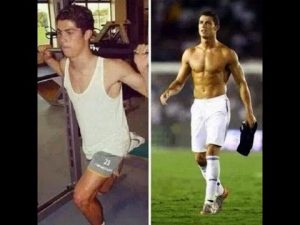
From my point of view, running should be the last step in this process and yet what we most frequently see is people running all crooked and with an obvious deficit in muscle strength. But the problem is not theirs, they are trying to do something for their health (and probably that’s all they know), the problem is that most of them are not aware that running is a skill, which requires preparation, practice and training. Cristiano Ronaldo did not become the best player in the World over night, it took many hours of training (in the field and in the gym) to reach this level. Although it’s relatively easy and affordable for anyone to put on their shoes and just go out for a run, running also requires preparation, practice and training (technical and physical).
It is necessary to have stability, mobility, strength (every step we take on the ground is subject to the action of gravity and the speed we run, generating reaction forces of 2 to 5 times our body weight), symmetry, quality of movement and good musculoskeletal health. Running to get healthy or fit is one of the greatest physical distresses on our body if we don’t have a solid foundation. First, you need to be in good shape to run. If you don’t hone good movement skills, you are more likely to get injured. According to the available literature, the incidence rate of injury in runners may exceed 90%, this is more than any other sport. Plantar fasciitis, stress fractures, patellar tendonitis and patellofemoral pain are just a few examples. Check this systematic review if you’re interested in learning more.
Again, don’t get me wrong, I’m not anti-running and I admire the effort and suffering capacity of all runners. I think we should all be able to run (by the way, that’s how we evolved as a species), the problem is that most people who run are not properly prepared to run and there are fundamental learning steps that should not be overlooked in order to prevent structural imbalances in the musculoskeletal system and injuries. Cleary the simplistic idea of “move more” is not enough.
A new way to look at training
Different types of training can affect the way our genes work and how they interact with our cells. With good training it’s possible to decrease chronic inflammation, improve insulin sensitivity, strengthen the cardiovascular system, improve lipid profile, slow down normal aging, burn fat (as we’ve seen in more detail above), increase confidence and self-esteem, increase energy levels, increase mental strength, improve a number of physical skills that we need for our daily life activities or sports practice (such as strength, stability, mobility, balance, speed, agility) and our different energy systems (ATP-CP, glycolytic, and oxidative). As we age, these skills naturally decline, but the fact is that with a more comprehensive training program it is possible to reverse and / or at least mitigate this decline.
Most people think that genes are the brain of the cell, they believe that if genes don’t tell you what to do, the cell dies. But if you remove the genes from the cell, the cell is still alive, eliminating waste products and behaving just like another cell. So, instead of genes being the brain of the cell, think of genes as your instruction / repair manual. When a worn part of the cell needs to be repaired or when new substances need to be produced, genes will give instructions for doing so.
Every cell in our body is surrounded by a fatty membrane, which is filled with thousands of receptors. These receptors receive information from different parts of the body and pass this information into the cell to form / encode new proteins, burn more or less fat, etc. (Note: this is why it’s important to eat good fats and avoid the hydrogenated fats present in most processed foods so that the cell membrane is more permeable to nutrient delivery.) It’s this membrane with receptors the cell command center so if we remove these membrane receptors, the cells die. This means that cell function is highly influenced by external factors, namely through hormones and other molecules that bind to these receptors.
These messenger molecules are not randomly created by our body, they are created according to our lifestyle, diet, thoughts, behaviors, temperature, light, sound and… our type of training. It’s possible to be born with some defective genes – for example BRCA 1 and BRCA 2, which increase the risk for breast cancer – but it’s these messenger molecules / hormones that will determine the degree of activation of these genes. Therefore, controlling these hormones means controlling the body.
(Note: Don’t you find it strange that almost 90% of health care costs is related to treat health conditions, while 80% of health problems / diseases arise as a consequence of our lifestyle and the environment we’re exposed to? Check this TED talk from Dan Buettner to realize why we are walking in the wrong direction).
High-intensity exercise is the one that induces a more favorable hormonal environment, with an increase in hormones such as testosterone, growth hormone and IGF-1, interleukins with an important role in inflammation (IL-6), muscle tissue maintenance (IL-15) and growing of new blood vessels (IL-8), lactic acid (which has the ability to keep us young by stimulating the release of testosterone and growth hormone) and nitric oxide, a vasodilator which plays a key role in regulating blood pressure, muscle strength and erectile dysfunction. Unfortunately, long running does not produce the same effects. Compound movements, which require a combination of strength and stamina, in short periods of time, are those that will put your muscles to “talk” more with your body. Burning calories is only a minor side effect when compared to the amount of hormones and other signaling molecules that influence how our body works.
To be clear, we are talking about intensity coupled with movement quality. Intensity coupled with bad movement will have the opposite effect: INJURY.
Conclusion
It’s urgent to give rise to a new mentality on training the movement skills that we will need throughout our lives. And this is a serious limitation of most group classes in conventional gyms. The instructors are obliged to follow a certain beat and choreography. Individualized feedback is almost non-existent. People don’t have time to understand or to learn the movements. And no one learns anything if they don’t know what it’s for, no one learns anything if they don’t understand how it’s supposed to feel and its practical implications. In addition, most machines in gyms annihilate the sensory and body perception that we, humans, need. We live in a three-dimensional world, in a world of constant adaptation and spatial exploration, so it makes no sense that machines and choreographies of group classes dictate the rules of our movement.
And why is it important to learn efficient movements? First, an efficient movement happens when a body is able to produce force through a coordinated action between the various body segments without energy leaks and demonstrating a natural ability to exploit maximum range of motion. Second, it’s movement that will allow you to play more time with your children, change the furniture at home, improve your day-to-day performance and your performance in your recreational activities.
Look at this type of training as the foundation, the support you need to get stronger, faster, smarter, more agile, more competent in a series of physical attributes that will allow you to perform better in the activities you enjoy doing. Would you like to start playing tennis? golf? volleyball? Would you like to start surfing? paddle board? weightlifting? powerlifting? dance? climbing? triathlon? Would you like to be faster when you play football with your friends during on weekends? Obviously, each modality has its specific abilities, but they all share the same foundation: human being’s adaptability capacity. To improve these specific skills safely, you first need to improve your fundamental movement patterns. And to sustainably keep improving these fundamental movement patterns, you need to train better and respect the developmental stages of each one.
To sum up, the great advantage of better training (and I remind you what we learned about the power of exercise, good movement and a new way of looking at training) is to improve your quality of life, maximize your performance and, above all, giving you the freedom and autonomy to choose the activity / sport that you always wanted to try but never had the courage or opportunity to start off.
Think about these things next time you go to the gym to walk on the treadmill with your headphones on and watch some TV series for 40 minutes while looking at the calories burned on the monitor and at the workouts or exercises other people are doing.
See you soon!
Pedro Correia
References
Berardi, J, Andrews, R. The Essentials of Sport and Exercise Nutrition. Certification Manual. Second Edition. Precision Nutrition Inc. (2013).
Björntorp P. Hormonal control of regional fat distribution. Hum Reprod. 1997 Oct;12 Suppl 1:21-5. Review.
Frederick F. Samaha, M.D., Nayyar Iqbal, M.D., Prakash Seshadri, M.D., Kathryn L. Chicano, C.R.N.P., Denise A. Daily, R.D., Joyce McGrory, C.R.N.P., Terrence Williams, B.S., Monica Williams, B.S., Edward J. Gracely, Ph.D., and Linda Stern, M.D. A Low- Carbohydrate as Compared with a Low-Fat Diet in Severe Obesity. N Engl J Med 2003; 348:2074-2081.
Gary D. Foster, Ph.D., Holly R. Wyatt, M.D., James O. Hill, Ph.D., Brian G. McGuckin, Ed.M., Carrie Brill, B.S., B. Selma Mohammed, M.D., Ph.D., Philippe O. Szapary, M.D., Daniel J. Rader, M.D., Joel S. Edman, D.Sc., and Samuel Klein, M.D. A Randomized Trial of a Low-Carbohydrate Diet for Obesity. N Engl J Med 2003; 348:2082-2090.
Houston, M. What your doctor may not tell you about Heart Disease. Grand Central Life & Style (2012).
Kraemer WJ, Volek JS, Clark KL, Gordon SE, Puhl SM, Koziris LP, McBride JM, Triplett- McBride NT, Putukian M, Newton RU, Häkkinen K, Bush JA, Sebastianelli WJ.
Influence of exercise training on physiological and performance changes with weight loss in men. Med Sci Sports Exerc. 1999 Sep;31(9):1320-9.
Schuenke MD, Mikat RP, McBride JM. Effect of an acute period of resistance exercise on excess post-exercise oxygen consumption: implications for body mass management. Eur J Appl Physiol. 2002 Mar;86(5):411-7. Epub 2002 Jan 29.
Tremblay A, Simoneau JA, Bouchard C. Impact of exercise intensity on body fatness and skeletal muscle metabolism. Metabolism. 1994 Jul;43(7):814-8.
van Gent RN, Siem D, van Middelkoop M, et al Incidence and determinants of lower extremity running injuries in long distance runners: a systematic review British Journal of Sports Medicine 2007;41:469-480.
This is an article on a topic that is very special to me. I’m going to talk about myself, about music, about musicians, about sports and about physical preparation.
I will explain how it is possible to play at the highest level for many, many years in a healthy way and without having to practice endless hours of scales with perfect technique. I will explain how it is possible to avoid tendinitis and other musculoskeletal injuries that typically affect musicians sooner or later, which result from long hours of practice of repetitive gestures in very “unnatural” positions. Yes, it is possible to avoid, mitigate or even eliminate pain in your back, shoulders, neck, elbows, wrists and fingers, which are so common among professional musicians.
Me and music …
Those who have known me for less than 10 years probably don’t know, but I have had a career as a professional musician for at least the previous 10 years. I’ve started playing bass guitar and at a certain point I switched to double bass. I’ve studied at several schools in Portugal (Lisbon Conservatory, Lisbon Superior School of Music and Hot Club of Portugal Jazz School where I would become a teacher) and graduated from the Conservatory of Amsterdam. I was in fact obsessed with playing double bass and particularly obsessed with playing it with perfect technique! I used to practice a reasonable number of hours a day and was able to subject myself to incredibly boring exercises for many hours in a row, just because I wanted to improve a certain aspect of my performance. I could practice about 10 hours a day. For the less familiar with music instruments, the double bass is a very physically demanding instrument, and 10 hours of repetitive gestures in unbalanced positions is very stressful on the body.
Due to long hours of musical practice, I developed a debilitating neuromuscular pathology (focal dystonia) that led me to a long rehabilitation process and to put my music career on hold. To know what focal dystonia is follow this LINK. In addition to focal dystonia, the list of complaints included:
- Frequent back pain, particularly in the lower back;
- Pain and stiffness in the neck, the sensation of having a wry neck that never went away;
- A thoracic kyphosis already up to a non-physiological degree;
- Protruded (forward) shoulders;
- Uneven hips. Because I spent many hours standing leaning mostly over my right leg and in slight lateral flexion, my pelvis was tilted to that side, just like my torso and shoulder. In fact, my right side was all “shortened”, as if I had one leg shorter than the other, which anatomically does not occur;
- Highly rigid and weak wrists, hands and fingers. For instance, I could not hold a push-up position on the floor with arms straight and shoulders over the hands, because my wrists would hurt and did not extend enough.
To aggravate all these imbalances caused by specific and repetitive gestures, my choices for physical activity (yes, because my past in sports impelled me not to be sedentary) relied on activities that were also specific and that also included repetitive gestures, that is, I would play sports! By definition, any sport and its related gestures are specific, cyclic, repetitive and asymmetric. There are sports “less bad” than others, but they are all asymmetrical. And no, swimming is not a complete sport, none is!
All this, and particularly the highly traumatizing and time-consuming process of neuromotor retuning that I underwent to treat dystonia, has prompted me to better understand processes related to the neuromuscular function, motor control, and musculoskeletal injuries. I decided to go back to the university and start a new career, and discovered other obsessions: anatomy, physiology, nutrition, strength training. And here I am today!
Musicians and the myths about “frailty” of their fingers and body …
I have to acknowledge, and my musician friends must forgive me, but musicians are usually very lazy to do any physical activity. We live to play our instruments and to be available for rehearsals. We make up excuses such as not having time and / or that our working tools (e.g. hands and fingers) are very “sensitive” and prone to injury if we engage in any vigorous physical activity. The fear of twisting a finger or cutting a lip (for wind instrumentalists) or even a foot (for drummers) is understandable! In fact, a finger injury for example may be enough to impede a musician from working for several weeks.
Who hasn’t witnessed or lived the situation where when playing soccer with friends those who are musicians try to avoid playing as the goal keeper with fear of injuring their fingers? Perfectly legitimate and understandable. And it’s precisely for this reason that if musicians want to get in better shape and ensure they can play music without injuries for many more years, doing sports is not the solution. They can do it for pleasure, and the energy expenditure that results from it can have positive metabolic effects. However, all asymmetries and musculoskeletal injuries that result from playing an instrument will not be corrected by playing a particular sport and will most likely will be worsened.
Musicians should do general physical preparation instead! Because a professional musician is a highly specialized high-level athlete. A high-level athlete practices his sport and in his training program is (or at least should be) included a very important component which is basic physical preparation. In his physical preparation program our athlete trains for strength, mobility and endurance, and other physical qualities in order to establish a general athletic base that will make him more resilient and protect him from injuries that his sport, which is repetitive and asymmetrical, makes him vulnerable to.
We don’t get fit FROM PLAYING sports, we should get fit TO PLAY sports. The repetition of specific sports gestures induces specific musculoskeletal adaptations. It is easy to understand that for an athlete, it does not make sense to try to compensate for a specific adaptation induced by a sport gesture with another one which might apparently look as an opposite one! For example, will it be smart for a right-handed tennis player to try compensating for the asymmetries resulting from playing with his right arm by engaging in the practice of table tennis with his left arm? Or, if our player exhibits pain in the right shoulder associated with lack of flexibility and strength, does it make sense to start practicing gymnastics just because apparently gymnasts have strong and flexible shoulders? No and no! This athlete should follow a program of general physical preparation to become stronger and more mobile, which can in fact compensate for the asymmetries induced by the sport that he practices.
What is the similarity between playing an instrument and practicing a sport? It’s the same…
Imagine compensating for the unbalanced position of playing double bass with playing another instrument in a seemingly opposite position?
Let’s explore that idea…
For example, playing double bass (a string instrument that can be played with a bow or fingers of the dominant upper limb) implies (usually) standing in a position characterized by unilateral rotation and flexion of the torso, accompanied by a forward leaning of the trunk, in a bipedal position with greater weight over the side of the torso’s lateral flexion, with elevation of both non-dominant arm and shoulder paired with depression of both dominant arm and shoulder, and rotation and slight lateral flexion of the head.
So, to compensate for or correct all these adaptations will it make any sense to go play the violin for example? Because apparently, it’s the opposite! You are (usually) sitting and not standing, the rotation and flexion of the head is in the opposite direction, where both dominant arm and shoulder are apparently more depressed, and the dominant arm raised …? Of course not…
By the same token, this musician will not be stronger, more flexible and more resilient to injuries due to his musical practice if he chooses to compensate for these adaptations with the practice of a sport. If you enjoy playing football or tennis with friends, you should do so, but it will not make you more resilient to injuries or attenuate the ones you may already have.
You must go to the basics: physical preparation.
Musicians should follow physical preparation program such as an athlete. Playing an instrument is highly specific and doing it regularly and long-term will require some specificity and in terms of exercises that can compensate for those unnatural positions that are held for such long periods of time. Yet, the basis of physical preparation will always be (for the athlete, musician, or any other) of a general nature. It is necessary to make the body stronger and more flexible, because only that way one can make it more resilient in order to endure the highly demanding physical requirements of playing a musical instrument for hours, days and years on end.
The pain and discomfort that you my fellow musician feel now, can improve with physical training! Smart training in a controlled environment. A kind of training that can make all the structures of our body stronger and less rigid. A kind of training that promotes a better alignment of the kinetic chain and that enables you to produce force in fundamental movement patterns such as pulling, pushing, lifting objects off the floor, squatting, crawling, walking and jumping.
And no, your body is not fragile! If it hurts, it’s because it’s somehow weak!
Believe me, I’ve been there, done that… ?

